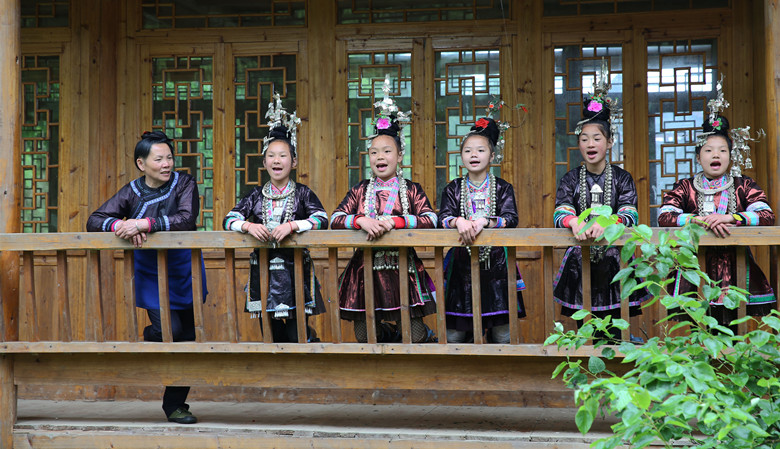 |
|
[Photo/gywb.com.cn] |
Her outstanding contribution to the inheritance of the Kam Grand Choir resulted in the local government selecting Hu as excellent singing master in 2004. In 2007, she won the title of Outstanding Inheritor of Chinese Folk Culture awarded by the China Federation of Literary and Art Circles and the Chinese Folk Literature and Art Society. In 2013, Hu was named an official inheritor of China’s national intangible cultural heritage. Spreading Ethnic Histories
One of China’s 55 ethnic minorities, the Dong people mainly live on the borders of Guizhou Province, Hunan Province, and Guangxi Zhuang Autonomous Region. The Dong culture has three icons: drum towers, wind-and-rain bridges, and the Kam Grand Choir.
With a history of more than 2,500 years, the Kam Grand Choir currently prevails in Liping, Congjiang, and Rongjiang counties of Guizhou, and Sanjiang County in Guangxi. As a folk polyphonic chorus, there is no need for accompaniment or a conductor. Comprised of many low pitches and a solo high pitch, this singing mode requires at least three people to perform, but the more, the better.
The Dong language has no written form. Therefore, singers learn by oral teaching. It is thought that this method inspires innate understanding. A huge amount of cultural heritage, living customs, and social etiquette have been passed from generation to generation via the Dong’s melodic songs.